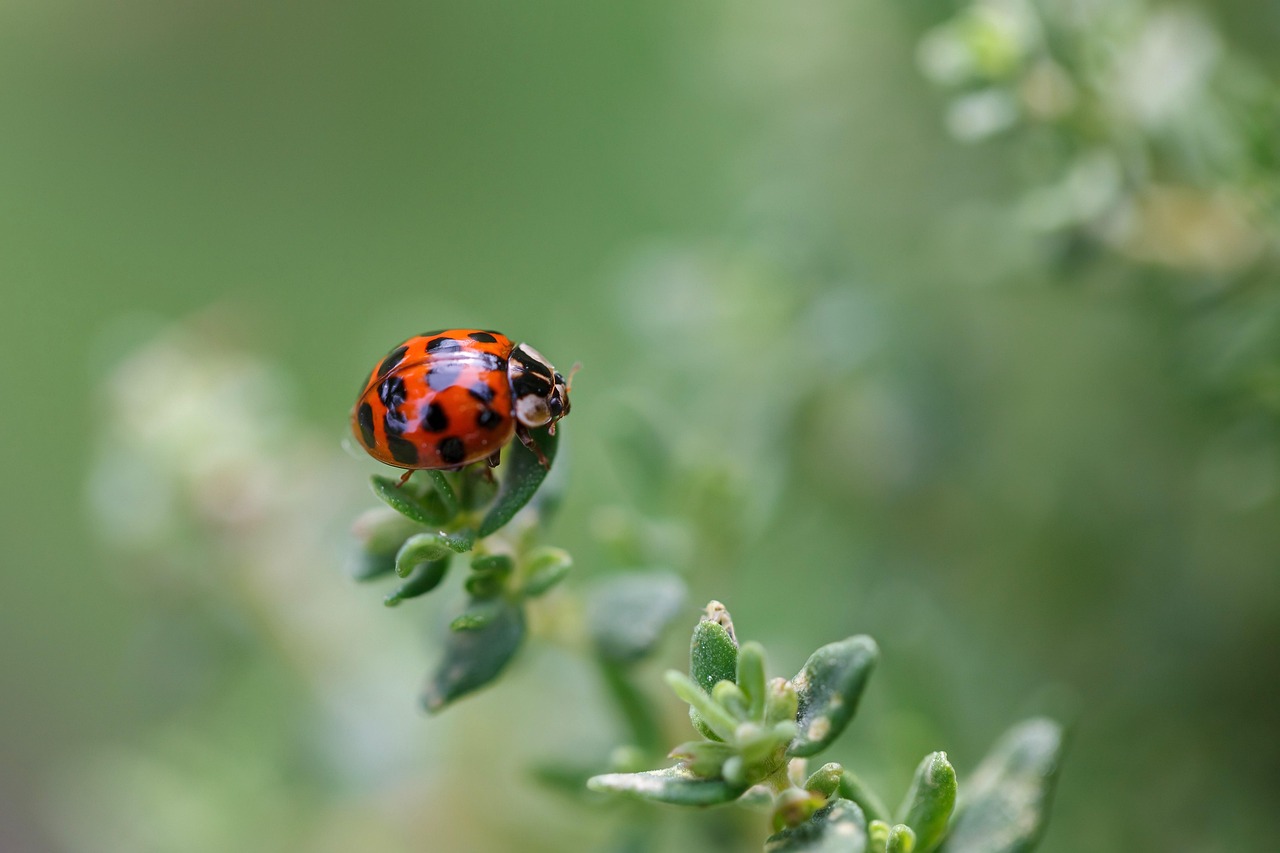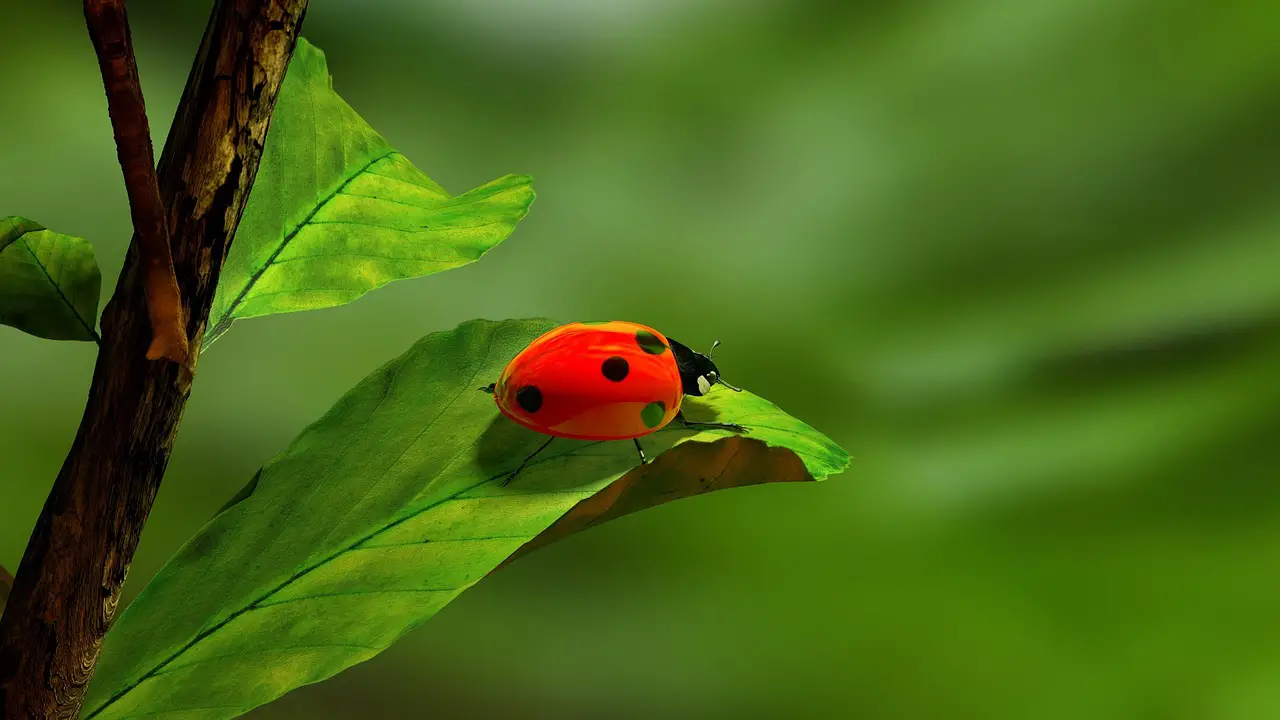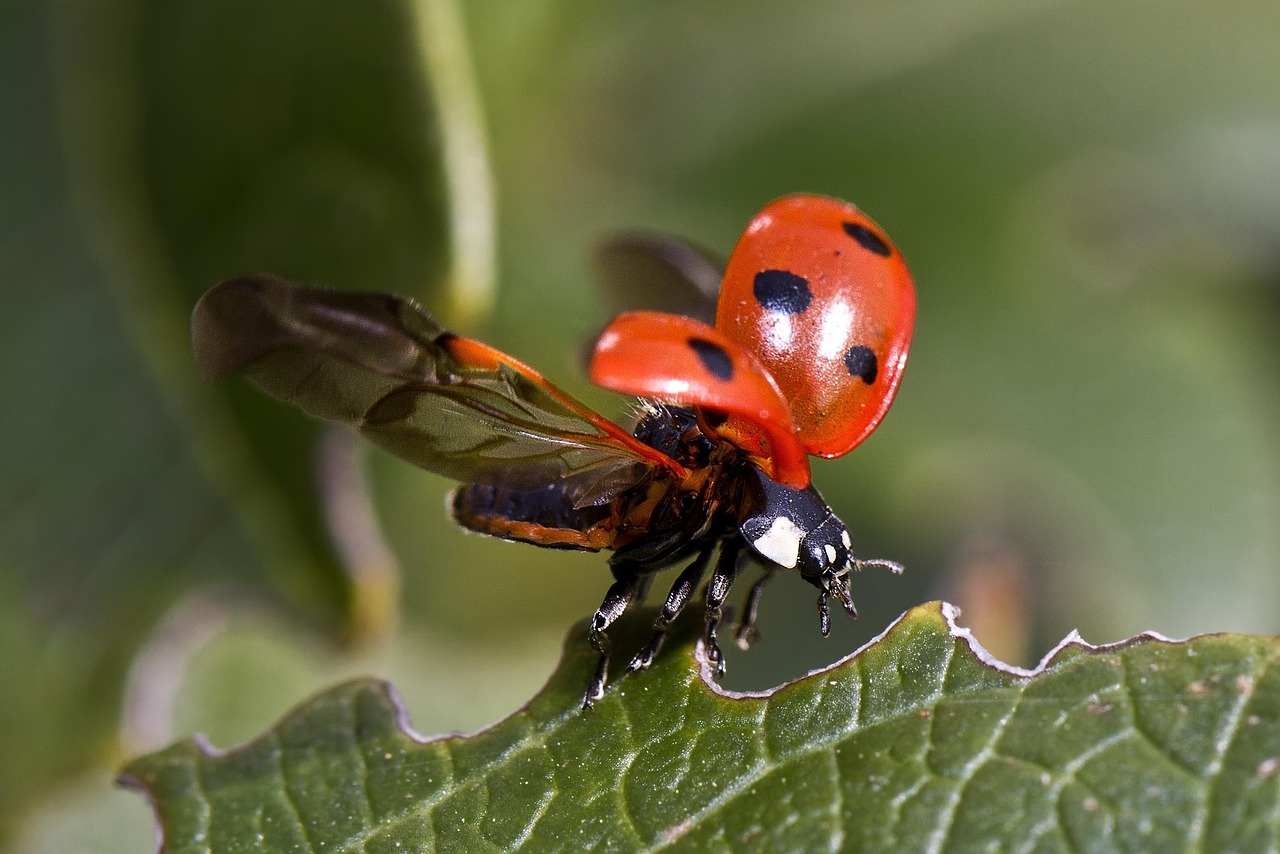Ladybugs, often regarded as symbols of good fortune, have fascinated people for centuries. Their vibrant colors and charming appearance captivate both children and adults alike. These tiny beetles belong to the family Coccinellidae and are known for their essential role in the ecosystem. They are not only beautiful but also beneficial, as they help control pest populations in gardens and farms.
There are more than 5,000 species of ladybugs globally, each with unique characteristics and colors. Their diversity is astounding, ranging from the classic red ladybug with black spots to more exotic varieties featuring stripes or different color combinations. This article will explore the various types of ladybugs and delve into their incredible features and behaviors.

Ladybugs are not just pretty insects; they play a vital role in agriculture. They primarily feed on aphids, which are notorious for damaging crops. By controlling these pest populations, ladybugs contribute significantly to sustainable farming practices. Here are some interesting facts about ladybugs:
| Fact | Description |
|---|---|
| Species Diversity | There are over 5,000 species of ladybugs worldwide. |
| Diet | Ladybugs primarily feed on aphids and other small insects. |
| Life Cycle | Ladybugs undergo a complete metamorphosis: egg, larva, pupa, and adult. |
| Coloration | Commonly red with black spots, but can also be orange, yellow, or even black. |
Types of Ladybugs
Among the many species of ladybugs, some are more commonly recognized than others. Below are a few prominent types that you may encounter:
- Seven-Spotted Ladybug (Coccinella septempunctata): This is one of the most recognizable species, noted for its seven black spots on a bright red background.
- Two-Spotted Ladybug (Adalia bipunctata): Featuring two black spots, this ladybug is often found in gardens and fields.
- Asian Ladybug (Harmonia axyridis): Known for its diverse coloration, this species can appear orange or even black with spots.
- Psyllid Ladybug (Psyllobora vigintimaculata): Unique for its yellow color and black spots, it primarily feeds on psyllids.
The Seven-Spotted Ladybug is particularly noteworthy due to its widespread presence in North America and Europe. It is often used in biological control programs due to its voracious appetite for aphids. The Two-Spotted Ladybug also plays an essential role in gardens, as it helps maintain healthy plant life by keeping aphid populations in check.
The Asian Ladybug has gained attention not only for its pest control abilities but also for its adaptability to different environments. It can be seen in various habitats, from gardens to forests. However, it is important to note that while it is beneficial in many ways, it can also become invasive in certain regions.
As we delve deeper into the world of ladybugs, it is essential to appreciate their beauty and ecological significance. Each species has adapted uniquely to its environment, showcasing nature’s incredible diversity and resilience.
The Life Cycle of Ladybugs
Understanding the life cycle of ladybugs provides insight into their fascinating biology and behavior. Ladybugs undergo complete metamorphosis, which includes four distinct stages: egg, larva, pupa, and adult. Each stage plays a crucial role in the development of these remarkable insects.
Egg Stage
The life cycle begins when female ladybugs lay clusters of eggs, often on the underside of leaves where aphids are abundant. A single female can lay up to 400 eggs during her lifetime. These tiny, yellow or orange eggs are usually laid near a food source to ensure that the larvae have enough to eat once they hatch.
Larva Stage
After about three to ten days, the eggs hatch into larvae. Ladybug larvae resemble small alligators and can be black, gray, or even striped. This stage lasts for about two to three weeks. During this time, the larvae are voracious eaters, consuming large quantities of aphids and other pests. Their appetite helps control pest populations effectively.
Pupa Stage
Following the larval stage, ladybugs enter the pupa stage. This phase lasts around five to seven days. The larvae attach themselves to a surface and undergo significant changes as they prepare to become adults. During this time, they are vulnerable and stay mostly still, relying on their camouflage to avoid predators.
Adult Stage
Once the metamorphosis is complete, the adult ladybug emerges from the pupa. Initially, the new adult may have a soft body and a pale color, which hardens and darkens over time. Adult ladybugs can live for several months to a couple of years, depending on environmental conditions and food availability.
Benefits of Ladybugs in the Garden

Ladybugs are often regarded as gardeners’ best friends due to their pest control capabilities. Here are some significant benefits they provide:
- Pest Control: Ladybugs primarily consume aphids, but they also eat other harmful insects like mites and mealybugs.
- Natural Fertilization: By controlling pest populations, ladybugs help maintain a healthy balance in the ecosystem, reducing the need for chemical pesticides.
- Pollination: While they are not primary pollinators, ladybugs can contribute to pollination as they move from flower to flower in search of food.
- Indicator Species: The presence of ladybugs in a garden can indicate a healthy environment, making them valuable for monitoring ecosystem health.
Common Myths About Ladybugs

Despite their popularity and beneficial nature, several myths surround ladybugs. It is essential to debunk these misconceptions for a better understanding of these creatures.
- Myth 1: All ladybugs are red with black spots. This is false; ladybugs come in various colors and patterns.
- Myth 2: Ladybugs bring bad luck if they land on you. In many cultures, they are considered symbols of good luck.
- Myth 3: Ladybugs are harmful to plants. On the contrary, they are beneficial as they help control harmful pest populations.
By understanding these myths, we can appreciate ladybugs more while fostering a positive attitude towards these charming insects. Their unique life cycle and significant ecological role make them truly remarkable members of our natural world.
Ladybug Habitats
Ladybugs can be found in a variety of habitats, each offering the necessary resources for their survival. Understanding where these fascinating insects thrive can help us appreciate their adaptability and ecological importance.

Natural Habitats
In nature, ladybugs are commonly found in gardens, meadows, forests, and grasslands. They prefer environments that provide a rich supply of food sources, particularly aphids and other soft-bodied insects. Additionally, these habitats offer shelter from predators and adverse weather conditions. Here are some specific natural habitats where ladybugs are often spotted:
- Gardens: Flowering plants attract aphids, making gardens a prime location for ladybugs.
- Forests: Leaf litter and underbrush provide excellent hiding spots and food sources.
- Grasslands: Open fields with wildflowers support diverse insect populations, including ladybug prey.
Urban Environments
Interestingly, ladybugs have also adapted to urban environments. They can often be found in parks, residential gardens, and green spaces within cities. Urban gardens that utilize organic gardening practices are particularly appealing to ladybugs due to the abundance of aphids and other pests.
Many people attract ladybugs to their gardens intentionally. This practice not only enhances the beauty of the garden but also promotes a natural form of pest control. Here are some tips for creating a ladybug-friendly environment:
- Plant Diverse Vegetation: A variety of flowering plants can attract aphids while providing nectar for adult ladybugs.
- Avoid Pesticides: Utilizing chemical pesticides can harm ladybug populations. Opt for natural pest control methods instead.
- Create Shelter: Provide places for ladybugs to hide, such as small piles of leaves or rocks.
The Role of Ladybugs in Ecosystems
Ladybugs play an integral role in maintaining the balance of ecosystems. Their presence is often indicative of a healthy environment. Here are some key contributions they make:
Pest Control
As voracious predators of aphids and other harmful insects, ladybugs significantly reduce the populations of these pests. This natural pest control is beneficial for farmers and gardeners, leading to healthier plants and reduced reliance on chemical pesticides.
Food Source for Other Animals
While ladybugs serve as effective pest controllers, they are also prey for various animals. Birds, amphibians, and other insects rely on ladybugs as part of their diet. This relationship highlights the interconnectedness of ecosystems.
Indicators of Environmental Health
The presence of ladybugs can indicate a balanced ecosystem. High populations suggest that there is an abundance of food sources and a lack of harmful pollutants. Conversely, a decline in ladybug populations may signal environmental issues such as habitat destruction or pesticide overuse.
Cultural Significance of Ladybugs
Ladybugs hold a special place in various cultures worldwide. Their striking appearance and beneficial nature have led to numerous myths and traditions surrounding these insects.
- Good Luck Symbols: In many cultures, ladybugs are considered symbols of good fortune. It is believed that if a ladybug lands on you, it brings luck.
- Folklore: Various stories exist about ladybugs saving crops or bringing blessings to farmers.
- Cultural Art: Ladybugs appear in art and literature as representations of nature’s beauty and harmony.
This cultural significance further emphasizes the connection between humans and ladybugs, showcasing how these tiny creatures inspire joy and wonder across different societies.
Conservation Efforts for Ladybugs
As vital components of our ecosystems, ladybugs face various threats that can impact their populations. Habitat loss, pesticide use, and climate change are among the primary challenges they encounter. Conservation efforts are essential to protect these beneficial insects and promote their presence in the environment.
Habitat Preservation
One of the most effective ways to support ladybug populations is through habitat preservation. This includes protecting natural areas from urban development and agricultural expansion. Here are some strategies to help preserve ladybug habitats:
- Restoration Projects: Engage in or support projects aimed at restoring native plant communities, which can provide food and shelter for ladybugs.
- Conservation Areas: Advocate for the establishment of conservation areas that protect existing ecosystems where ladybugs thrive.
- Community Involvement: Encourage local communities to participate in habitat restoration initiatives and educate them about the importance of ladybugs.
Reducing Pesticide Use
Reducing the use of chemical pesticides is crucial for protecting ladybug populations. Homeowners and farmers can adopt integrated pest management (IPM) practices that minimize chemical applications. Some suggestions include:
- Natural Predators: Introduce or encourage natural predators, such as ladybugs, to control pest populations instead of relying solely on pesticides.
- Organic Gardening: Practice organic gardening techniques that promote biodiversity and reduce chemical exposure.
- Education: Provide education on the harmful effects of pesticides on beneficial insects and promote alternatives.
The Economic Impact of Ladybugs
The economic significance of ladybugs extends beyond their role in pest control. By reducing the reliance on chemical pesticides, they contribute to sustainable agriculture and promote healthier ecosystems. The benefits of ladybugs can be observed in various sectors:
- Agriculture: Farmers experience lower crop losses due to pest damage, leading to increased yields and profits.
- Gardening: Home gardeners enjoy thriving gardens without the adverse effects of chemical pesticides, enhancing the quality of their produce.
- Ecotourism: Healthy ecosystems that support diverse insect populations attract visitors interested in nature, generating revenue for local economies.
Final Thoughts
Ladybugs are not only charming creatures but also vital participants in maintaining ecological balance. Their role as natural pest controllers contributes significantly to sustainable agriculture and healthy ecosystems. Understanding their life cycle, habitats, and cultural significance enhances our appreciation for these insects.
The conservation of ladybug populations is essential for preserving biodiversity and promoting environmental health. By supporting habitat preservation, reducing pesticide use, and fostering awareness, we can ensure that ladybugs continue to thrive in our gardens and landscapes.
As we reflect on the impact of ladybugs, it is clear that these tiny beetles embody a connection between nature and humanity. Their presence serves as a reminder of the importance of protecting our environment and the intricate relationships that sustain life on Earth. Embracing the beauty and significance of ladybugs allows us to appreciate the wonders of nature while contributing positively to our ecosystems.
